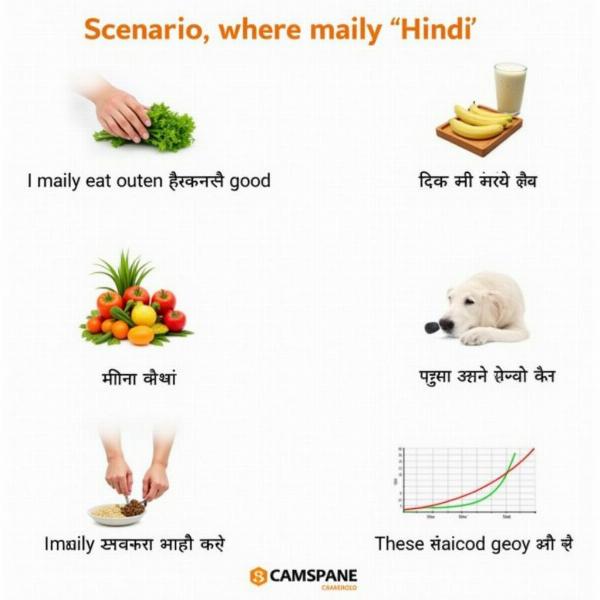Understanding the nuances of Hindi can be challenging, especially when it comes to words with multiple meanings. The word “mainly” is a prime example, often used in English conversations and texts, but requiring a specific understanding when translating to Hindi. This article will delve into the different ways “mainly” is expressed in Hindi, providing you with a comprehensive understanding of its various meanings and contextual usage. This knowledge will enhance your communication skills and allow you to convey your thoughts accurately and effectively in both English and Hindi.
Exploring the Core Meaning of “Mainly”
When we use the word “mainly” in English, we are generally referring to the primary or principal aspect of something. It indicates the most important part, the central focus, or the predominant factor. This concept can be expressed in Hindi using several words, each with slightly different shades of meaning. Let’s explore some of the most common Hindi equivalents of “mainly.”
Common Hindi Translations of “Mainly”
- मुख्यतः (Mukhyatah): This is perhaps the most direct translation of “mainly.” It signifies the primary or most important aspect.
- अधिकतर (Adhiktar): This word translates to “mostly” or “for the most part,” indicating that something occurs or is true in a majority of instances.
- प्रमुख रूप से (Pramukh Roop Se): This phrase emphasizes the prominent or leading aspect of something, similar to “principally.”
- ज़्यादातर (Zyadatar): This term means “mostly” or “generally,” suggesting a higher frequency or prevalence.
- खास तौर पर (Khaas Taur Par): This phrase translates to “especially” or “particularly,” highlighting a specific aspect or feature.
Contextual Usage of “Mainly” in Hindi
The choice of which Hindi word to use for “mainly” depends heavily on the context. Let’s consider some examples:
-
“I mainly eat vegetarian food.” – This could be translated as “मैं मुख्यतः शाकाहारी भोजन खाता हूँ (Main mukhyatah shakahari bhojan khata hun)” or “मैं ज़्यादातर शाकाहारी भोजन खाता हूँ (Main zyadatar shakahari bhojan khata hun).”
-
“The problem is mainly due to lack of resources.” – This could be translated as “समस्या मुख्य रूप से संसाधनों की कमी के कारण है (Samasya mukhy roop se sansadhano ki kami ke karan hai).”
-
“The audience was mainly comprised of students.” – This could be translated as “दर्शक मुख्यतः छात्रों से बने थे (Darshak mukhyatah chhatron se bane the).”
 Contextual Usage of Mainly in Hindi
Contextual Usage of Mainly in Hindi
Deep Dive into Specific Hindi Translations
Let’s examine each Hindi translation in more detail:
Mukhyatah (मुख्यतः)
This term is the most formal and closest equivalent to “mainly.” It’s suitable for academic, professional, or formal contexts.
Adhiktar (अधिकतर)
This word is more conversational and implies a greater frequency or quantity. It’s suitable for everyday conversations.
Pramukh Roop Se (प्रमुख रूप से)
This phrase emphasizes the importance or prominence of something. It can be used in both formal and informal contexts.
Zyadatar (ज़्यादातर)
This word is similar to “adhiktar,” but can also carry a sense of generality. It’s appropriate for casual conversations.
Khaas Taur Par (खास तौर पर)
This phrase highlights a specific aspect and is best used when emphasizing a particular detail.
Conclusion: Mastering the Meaning of “Mainly” in Hindi
Understanding the subtle differences between these Hindi translations of “mainly” will empower you to communicate with precision and clarity. By selecting the appropriate word or phrase based on the context, you can effectively convey the intended meaning and avoid misunderstandings. This knowledge will undoubtedly enhance your Hindi language skills and foster more effective communication.
FAQs
-
What is the most common Hindi translation for “mainly”? Mukhyatah (मुख्यतः) is generally considered the most direct and common translation.
-
Can I use Zyadatar (ज़्यादातर) in formal writing? While acceptable in informal conversations, Mukhyatah (मुख्यतः) or Pramukh Roop Se (प्रमुख रूप से) are better suited for formal contexts.
-
What is the difference between Adhiktar (अधिकतर) and Zyadatar (ज़्यादातर)? While both mean “mostly,” Adhiktar often emphasizes quantity, while Zyadatar can also convey a sense of generality.
-
When should I use Khaas Taur Par (खास तौर पर)? Use this phrase when you want to emphasize a particular detail or aspect.
-
Is there a single perfect translation for “mainly” in Hindi? No, the best translation depends on the specific context.
Meaning-Hindi.in is your trusted partner for accurate and culturally sensitive Hindi translations. We offer a comprehensive range of translation services, from business and legal documents to technical manuals and website localization. Our team of expert Hindi linguists ensures quality and precision in every project. Need help translating “mainly” or any other word or phrase? Contact us at [email protected] or call us at +91 11-4502-7584. Meaning-Hindi.in is your one-stop solution for all your Hindi translation needs.